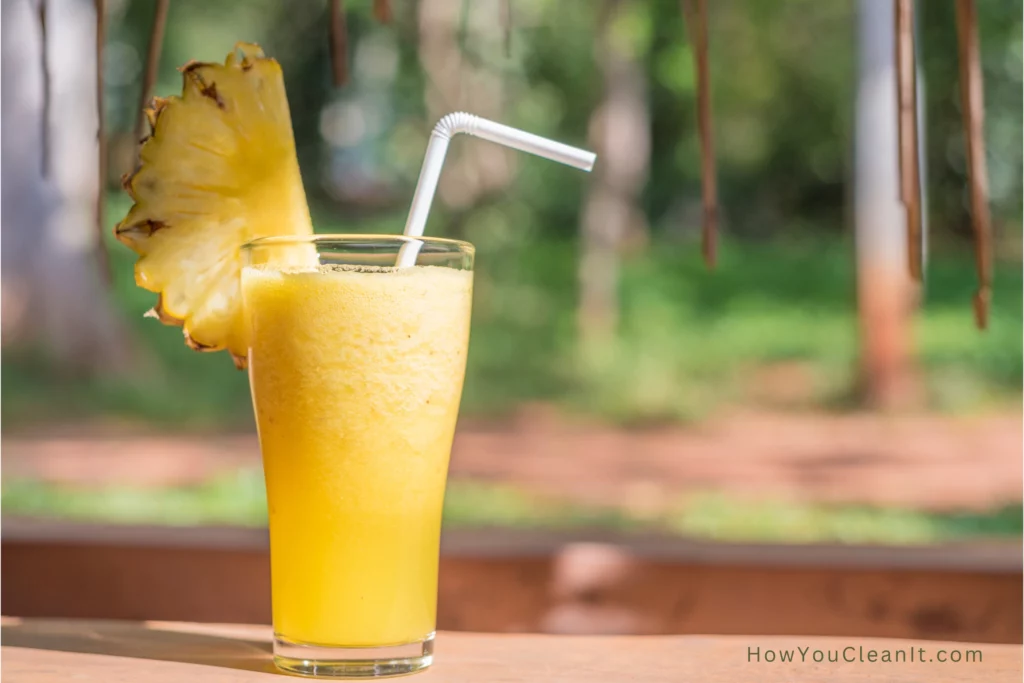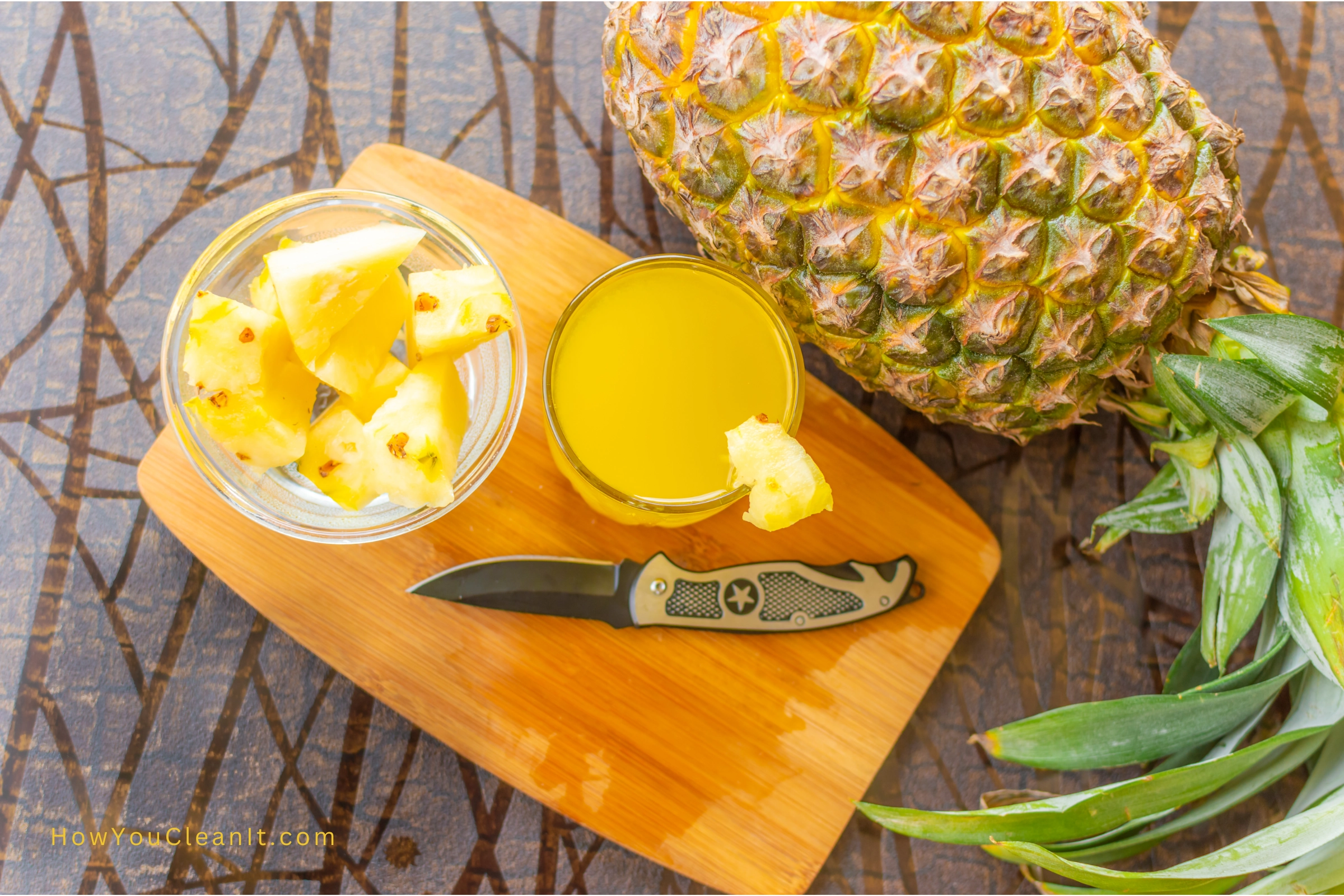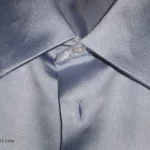
Does Pineapple Juice Stain? Uncovering the Truth and Tips for Stain Removal
This post may contain affiliate links or Google Ads and we may earn a small commission when you click on the links at no additional cost to you. As an Amazon Affiliate, we earn from qualifying purchases. This is at no additional cost to you and helps with our website expenses.
If you’re a pineapple lover, you might find yourself wondering, does pineapple juice stain?
We’ve all been there, sipping on our favorite drink, only to have it spill unexpectedly. And pineapple juice, with its bright tropical hue, may seem like a prime candidate for leaving a lasting mark on your clothes or upholstery.
Well, you’re not alone in your curiosity. This is a common concern among pineapple juice lovers worldwide. But fear not, we’re here to demystify this juicy question.
Understanding Pineapple Juice
Pineapple juice, besides being incredibly tasty, has a vibrant color. Thanks to the pigment carotenoids present in the juice, it holds a deep yellow color that’s quite noticeable.

So, when it comes to our clothes or furniture, it’s normal to worry about potential staining from such a bold-colored liquid.
Does Pineapple Juice Stain?
Alright, let’s get down to the nitty-gritty of this mystery. Does pineapple juice stain? The short answer is yes, it can. But why? Let’s unpack this.
The Staining Potential of Pineapple Juice
Pineapple juice, like many other fruit juices, contains natural sugars and pigments that have the potential to leave a mark on various materials.
When these substances come into contact with fabric, they can adhere to the fibers and, over time, may cause a visible stain.
Here are some factors that make pineapple juice a potential staining agent:
- Natural Sugars: Pineapple juice is rich in natural sugars. These sugars can stick to the fibers of fabrics and cause a residue that can darken and appear as a stain.
- Color Pigments: The vibrant yellow color of pineapple juice comes from natural pigments called carotenoids. These pigments can leave a yellowish mark on fabrics, contributing to the staining effect.
- Acidity: Pineapple juice is acidic. This acidity can interact with the fabric material and cause color changes that appear as a stain.
Fabric Susceptibility
Not all fabrics react the same way to pineapple juice. Some types of fabrics may be more prone to staining due to their structure and material.
For instance, natural fabrics like cotton and silk are often more susceptible to stains than synthetic fabrics. Their absorbent nature allows liquids to penetrate more deeply into the fibers, making it harder to remove the stain.
So, the next time you’re enjoying your pineapple juice, remember to be a little extra careful, especially if you’re wearing your favorite cotton tee or silk dress.
How to Prevent Pineapple Juice Stains

Now that we’ve established that pineapple juice can, indeed, stain, let’s dive into some preventive measures. While the ideal scenario is to not spill your juice at all, accidents do happen.
However, there are a few tips and tricks that can help you avoid ending up with a stain when you’re enjoying your pineapple juice.
Sip Wisely
Prevention is always better than cure, right? One of the simplest ways to prevent a pineapple juice stain is to be mindful while drinking.
Using a straw can minimize the chances of a spill, and holding the glass steadily can help you avoid those unexpected juice splashes.
Cover Up
If you’re a known juice spiller, consider using an apron or placing a napkin on your lap while enjoying your pineapple juice. It might not be the most fashionable choice, but it’s a practical one!
Opt for Light-Colored Clothes
Wearing light-colored clothes when drinking brightly colored juices, like pineapple juice, can be helpful.
Stains tend to be less noticeable on lighter fabrics. If you do spill, the stain might not be as visible as it would be on a darker fabric.
Use Coasters and Trays
When not drinking, make sure your pineapple juice glass is on a coaster or tray. This is especially important if you’re consuming your juice on a fabric-covered surface, like a couch or chair.
Immediate Cleanup
If a spill occurs, immediately cleaning up can significantly reduce the chances of a stain setting in. The longer the juice sits on the fabric, the more difficult it becomes to remove.
While these tips can help prevent pineapple juice stains, they can’t guarantee a stain-free experience.
How to Remove Pineapple Juice Stains from Fabric
Accidents happen, and before you know it, you might find a splash of pineapple juice on your favorite shirt or couch. But don’t worry, there are effective ways to tackle these stains. Let’s go through the steps of removing both fresh and dried pineapple juice stains.
Tackling Fresh Pineapple Juice Stains
If the spill is fresh, you’re in luck. It’s much easier to remove a stain that hasn’t set yet. Here’s what you do:
- Blot the Stain: Use a clean, dry cloth to blot as much juice as possible from the fabric. Be careful not to rub, as this can cause the stain to penetrate deeper into the fabric.
- Rinse with Cold Water: Rinse the stained area from the back with cold water to help flush out as much of the juice as possible.
- Pre-Treat the Stain: Apply a liquid laundry detergent or a stain remover to the stained area and gently rub it in. Leave it on for at least 5 minutes.
- Wash the Fabric: Wash the fabric as you normally would, following the washing instructions for that specific fabric type.
- Air-Dry the Fabric: After washing, let the fabric air dry. Check if the stain is gone before using a dryer, as heat can set the stain, making it much more difficult to remove later.
Handling Dried or Set Pineapple Juice Stains
If the stain has already dried or set, the removal process requires a bit more patience and effort:
- Soak in Cold Water: Fill a basin with cold water and a tablespoon of liquid laundry detergent. Soak the stained fabric in the solution for at least 30 minutes to loosen up the stain.
- Rinse and Pre-Treat: Rinse the fabric with cold water, then apply a stain remover or liquid laundry detergent directly to the stained area. Let it sit for 5-10 minutes.
- Wash the Fabric: Wash the fabric as per its washing instructions.
- Check the Stain: After washing, check to see if the stain is gone before drying. If the stain is still there, repeat the soaking, pre-treating, and washing steps until it is removed.
- Air-Dry the Fabric: Air-dry the fabric after ensuring the stain is gone.
These are some tried-and-tested methods for removing pineapple juice stains. The most important thing is to act quickly and be patient with the process. If your fabric is delicate or expensive, consider professional cleaning to avoid damaging it.
Tips for Dealing with Stains on Different Fabrics
We’ve gone over the general steps of removing pineapple juice stains, but it’s also crucial to consider the type of fabric you’re dealing with.
Different fabrics require different care, and what works for one might not be suitable for another. Let’s discuss a few special considerations for different fabrics:
Cotton and Linen
These fabrics are typically more robust and can handle direct application of stain removers. However, always check the care label first.
You can usually wash these materials in the washing machine following the stain removal process.
Wool and Silk
These delicate fabrics require special care. It’s recommended to use a gentle detergent and cold water for treating stains.
You may also want to consider professional cleaning services to avoid damaging these fabrics.
Synthetic Fabrics
Fabrics like polyester or nylon are less absorbent and can often resist stains better than natural fibers. However, they can still get stained.
Use a gentle detergent to treat the stain, and always follow the care instructions on the label.
Upholstery and Carpets
Always blot the stain first, then use a suitable upholstery or carpet cleaner as per the manufacturer’s instructions. Remember to test any cleaner on a small, hidden area first to ensure it doesn’t damage or discolor the material.
Wrap Up to Does Pineapple Juice Stain?
Navigating the world of spills and stains can seem daunting, but with a little knowledge and the right techniques, it doesn’t have to be.
So, does pineapple juice stain? Yes, it does. But now you know that it doesn’t have to spell disaster.
Remember, the key to tackling any stain is acting quickly, being patient with the process, and understanding the care requirements of the affected fabric.
Armed with these stain-fighting tips, you can now enjoy your pineapple juice worry-free.




